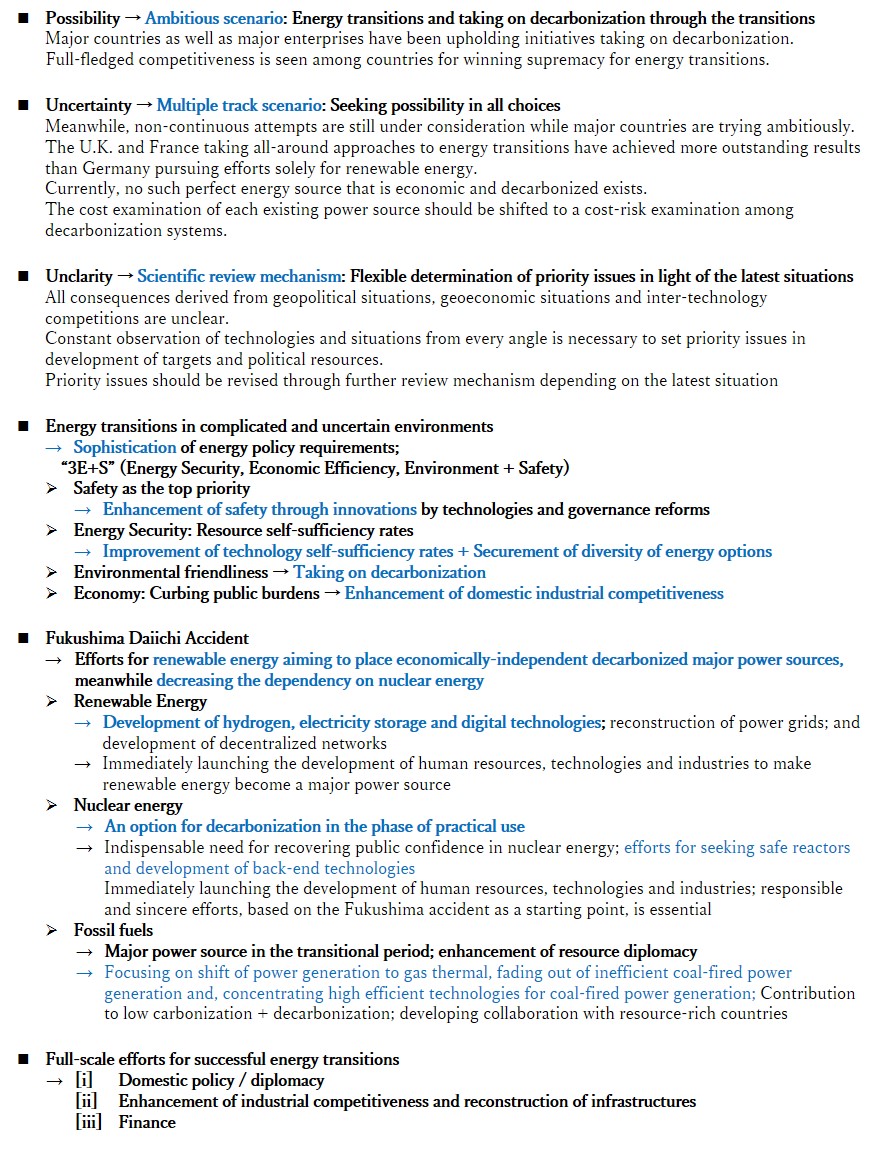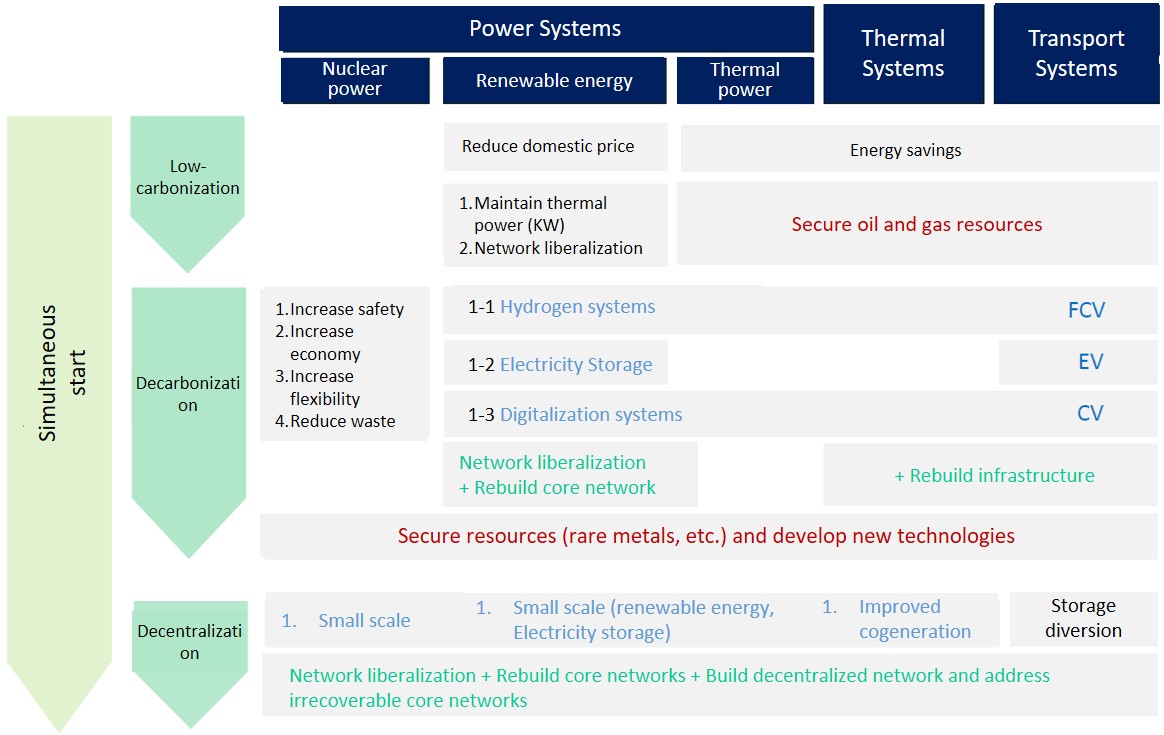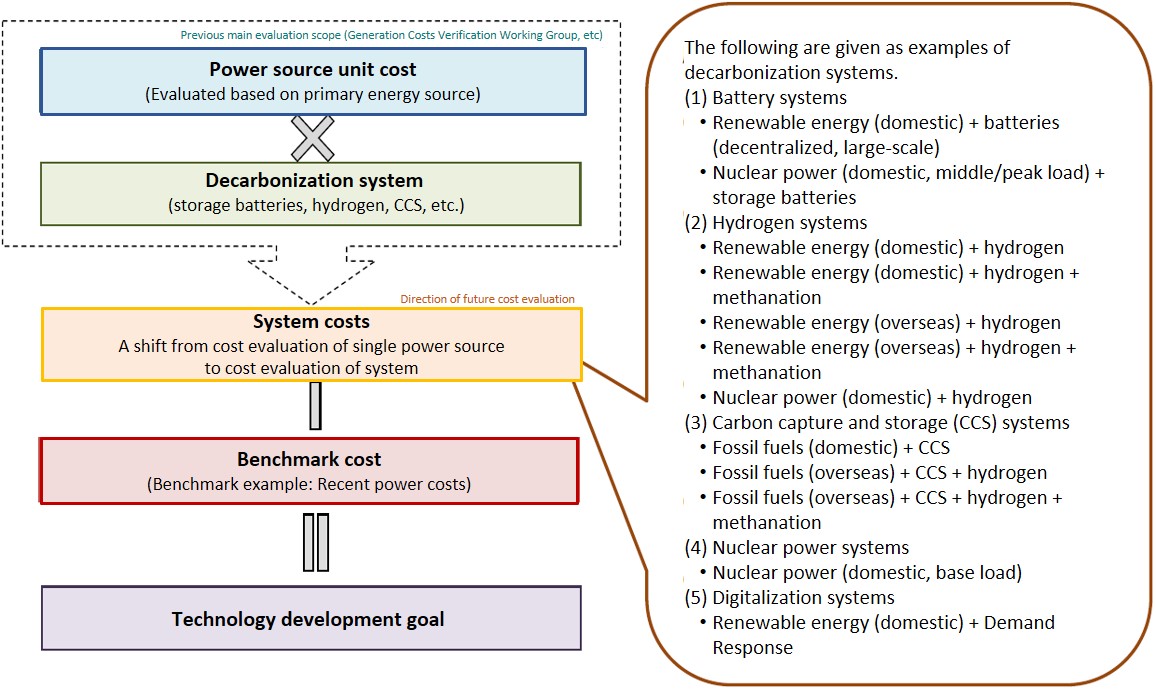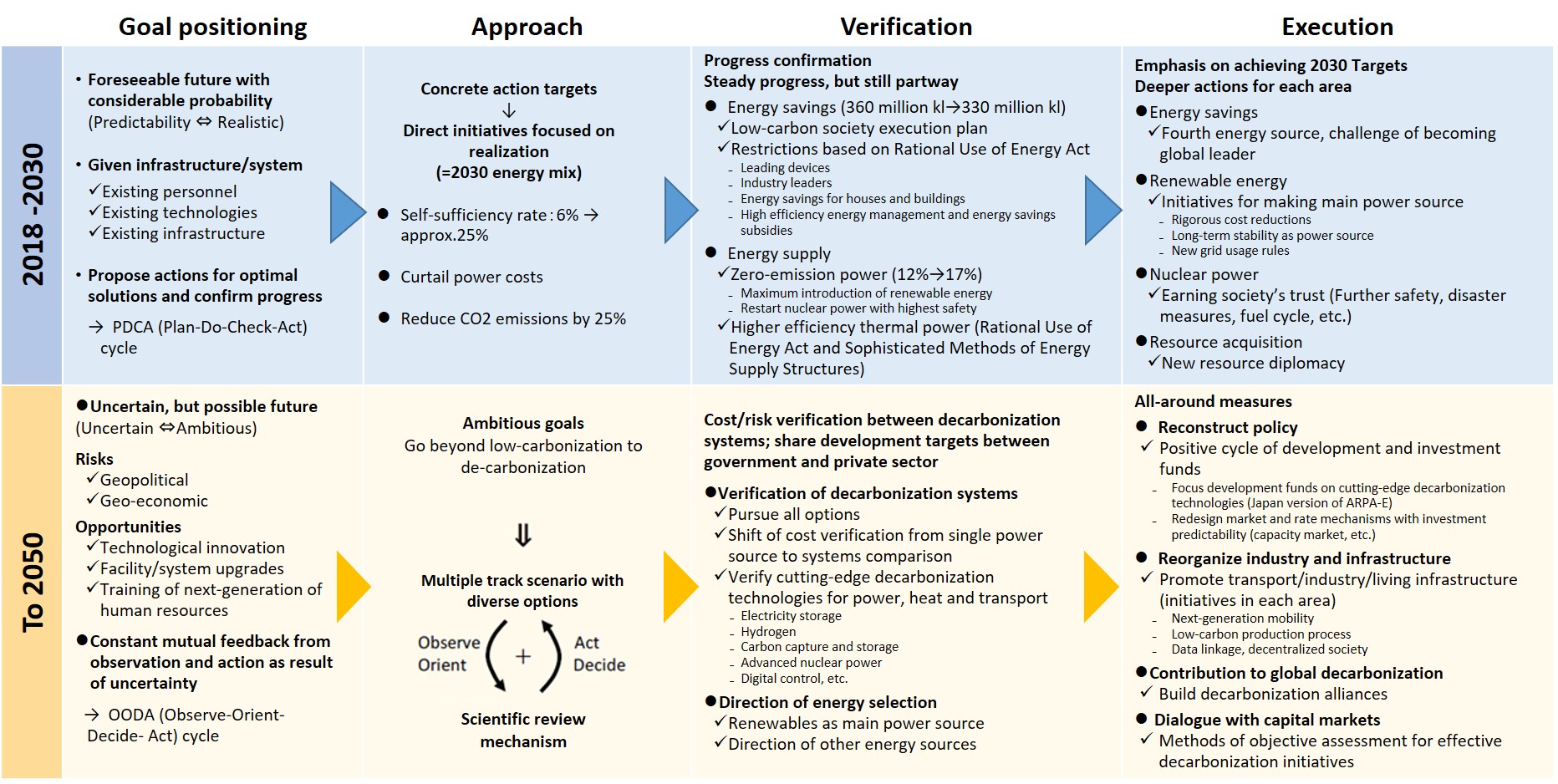The Ministry of Economy, Trade and Industry organized the Round Table for Studying Energy Situations to consider long-term energy policy for 2050 and held nine sessions with experts in the industries and academic institutions. “Recommendations: Initiatives for Energy Transitions” was compiled at the last session on April 10, 2018 based on the discussions. Policies were considered for reducing the country’s greenhouse gas emissions by 80% by 2050; however, the recommendations use the term “all-around approach” and apply a policy of pursuing so many options. It reflects strong insistence of certain sectors of industry promoting nuclear and coal power.
Issues of Decommissioning Reactors and Spent Nuclear Fuel
The purpose of the recommendations is to promote “energy transition and decarbonization” toward 2050. Based on discussions of eight members, “Multiple track scenario: Seeking possibility in all choices” was adopted (Figure 1). While renewable energy is positioned as the main power source for decarbonization, possibilities of nuclear power and high-efficiency coal power will continue to be pursued. With too much emphasis on leveraging technologies and assets accumulated by the electric power industry, Japan will be way behind the rest of the world where energy transition is progressing by utilizing renewable energy.

Source: Round Table for Studying Energy Situations (April 10, 2018)
Although the policy of reducing dependence on nuclear energy is maintained, the recommendations do not indicate any specific measures as in the previous energy policy. What is explained is just “it is essential to restore trust in society by mitigating risk of accidents through safety enhancements and addressing the backend issues of decommissioning reactors and processing nuclear waste.” In terms of technology, it only mentions development of small-scale reactors overseas without strong reasons of promoting nuclear power for the future.
Discussing the long-term energy policy toward 2050, the key issue to cover should be decommissioning reactors and disposing spent fuel from a safety standpoint. In order to pursue nuclear power as an option for decarbonization, there needs to be a roadmap of decommissioning aging reactors and disposing spent nuclear fuel (Figure 2).

Source: Round Table for Studying Energy Situations
Cost Verification Method Favorable for Nuclear Power
The recommendations present a new methodology of cost verification. Its validity, however, needs to be properly discussed. In the government’s Basic Energy Plan, an energy policy for 2030, the future power mix is designed based on cost estimation for each generating method, solar/wind, nuclear and coal/gas/oil. By contrast, the new verification method proposes estimating system costs of supplying power, such as a combination of renewable energy and batteries (Figure 3).

Source: Round Table for Studying Energy Situations
For example, assuming generating cost of solar and wind power drops to 7 yen per kWh (kilowatt-hour), national target for fiscal 2030, the total cost of system including batteries is estimated to be 69 yen/kWh. However, as for nuclear power, the system cost estimation is not presented. While positioning renewable energy as the main power source with a policy reducing dependence on nuclear power, the new cost verification method only seems to restrict renewable energy. It will not promote energy transition with optimal generating methods and costs.
Undervaluing Domestic Renewable Energy Technology
At the nine round tables, several members in support of nuclear power voiced sharp criticism of Japanese technologies for renewable energy. They pointed that markets for solar panels and wind turbines are dominated by overseas manufacturers and even in Japan the competitiveness of Japanese companies is decreased. As a result, the recommendations refer hydrogen, electricity storage and nuclear as decarbonization technologies Japanese companies have competence. It leads to the “all-around approach” by multiple track scenario in the recommendations.
However, cutting-edge technologies in Japan, such as next-generation solar cells, are being developed and bearing fruit. Technology development related to solar and wind power, major renewable energy sources globally, is broad and multifaceted, and Japanese companies are competitive in many areas. In considering decarbonization technologies for 2050, the current market observation for solar panels and wind turbines will inevitably produce a misguided strategy. Technology development of solar and wind power to drive energy transition should be more focused; it is not appropriate to position solar and wind equally with nuclear and high-efficiency coal where the market will be shrinking worldwide.
On grid connection playing an important role in energy transition, the recommendations do not accurately assess possibilities for the future. For instance, international transmission lines have expanded to countries throughout the world, particularly in Europe and North America, but the recommendations give a wrong interpretation, specifically for U.K. as an island nation with poor international grid connection. Moreover, it takes a passive stance that expanding renewable energy using an international grid has various issues for Japan and needs to be considered carefully. This is despite the fact that international grid connection is already discussed in the private sector and it is certainly possible to incorporate it into the long-term energy strategy.
The all-around approach of being ambitious but not selective is highly likely to put Japan behind in key areas (Figure 4). There is a strong possibility to be a high-risk and low-return strategy. The government needs to accurately assess global trends and build a decarbonization strategy focusing on energy efficiency and renewable energy without sticking to nuclear and coal power.

Source: Round Table for Studying Energy Situations
<Related Link>
The Round Table for Studying Energy Situations:
Key Points of Recommendations by the Round Table for Studying Energy Situations (PDF:430KB)






